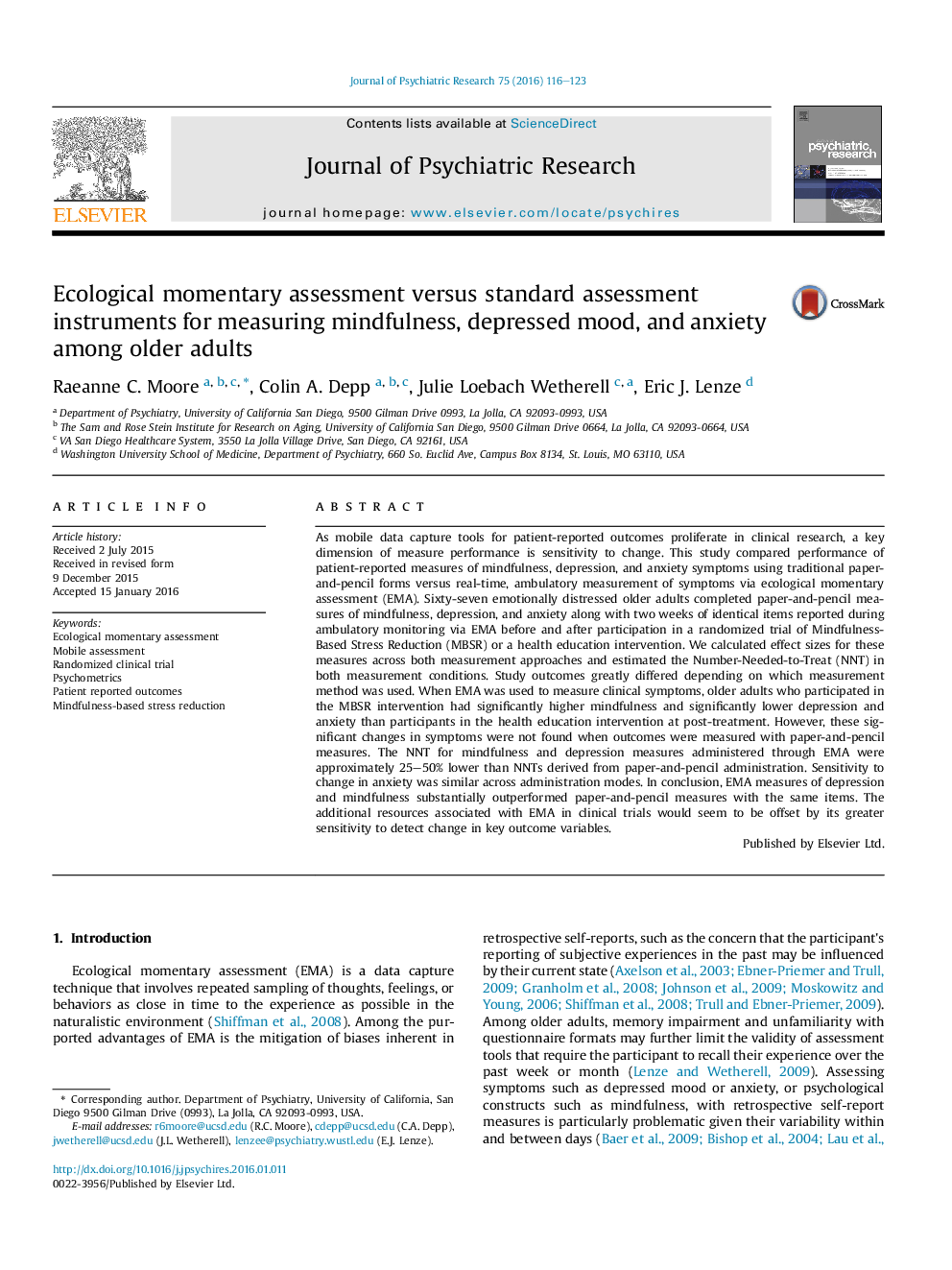| کد مقاله | کد نشریه | سال انتشار | مقاله انگلیسی | نسخه تمام متن |
|---|---|---|---|---|
| 327550 | 542925 | 2016 | 8 صفحه PDF | دانلود رایگان |
• Paper-and-pencil measures are traditionally used to measure treatment outcomes.
• Emotionally distressed older adults participated in a randomized controlled trial.
• We compared traditional vs ecological momentary assessment methods on study outcomes.
• Study outcomes greatly differed depending on which measurement method was used.
• Effect sizes for ecological momentary assessment methods were significantly higher.
As mobile data capture tools for patient-reported outcomes proliferate in clinical research, a key dimension of measure performance is sensitivity to change. This study compared performance of patient-reported measures of mindfulness, depression, and anxiety symptoms using traditional paper-and-pencil forms versus real-time, ambulatory measurement of symptoms via ecological momentary assessment (EMA). Sixty-seven emotionally distressed older adults completed paper-and-pencil measures of mindfulness, depression, and anxiety along with two weeks of identical items reported during ambulatory monitoring via EMA before and after participation in a randomized trial of Mindfulness-Based Stress Reduction (MBSR) or a health education intervention. We calculated effect sizes for these measures across both measurement approaches and estimated the Number-Needed-to-Treat (NNT) in both measurement conditions. Study outcomes greatly differed depending on which measurement method was used. When EMA was used to measure clinical symptoms, older adults who participated in the MBSR intervention had significantly higher mindfulness and significantly lower depression and anxiety than participants in the health education intervention at post-treatment. However, these significant changes in symptoms were not found when outcomes were measured with paper-and-pencil measures. The NNT for mindfulness and depression measures administered through EMA were approximately 25–50% lower than NNTs derived from paper-and-pencil administration. Sensitivity to change in anxiety was similar across administration modes. In conclusion, EMA measures of depression and mindfulness substantially outperformed paper-and-pencil measures with the same items. The additional resources associated with EMA in clinical trials would seem to be offset by its greater sensitivity to detect change in key outcome variables.
Figure optionsDownload as PowerPoint slide
Journal: Journal of Psychiatric Research - Volume 75, April 2016, Pages 116–123
